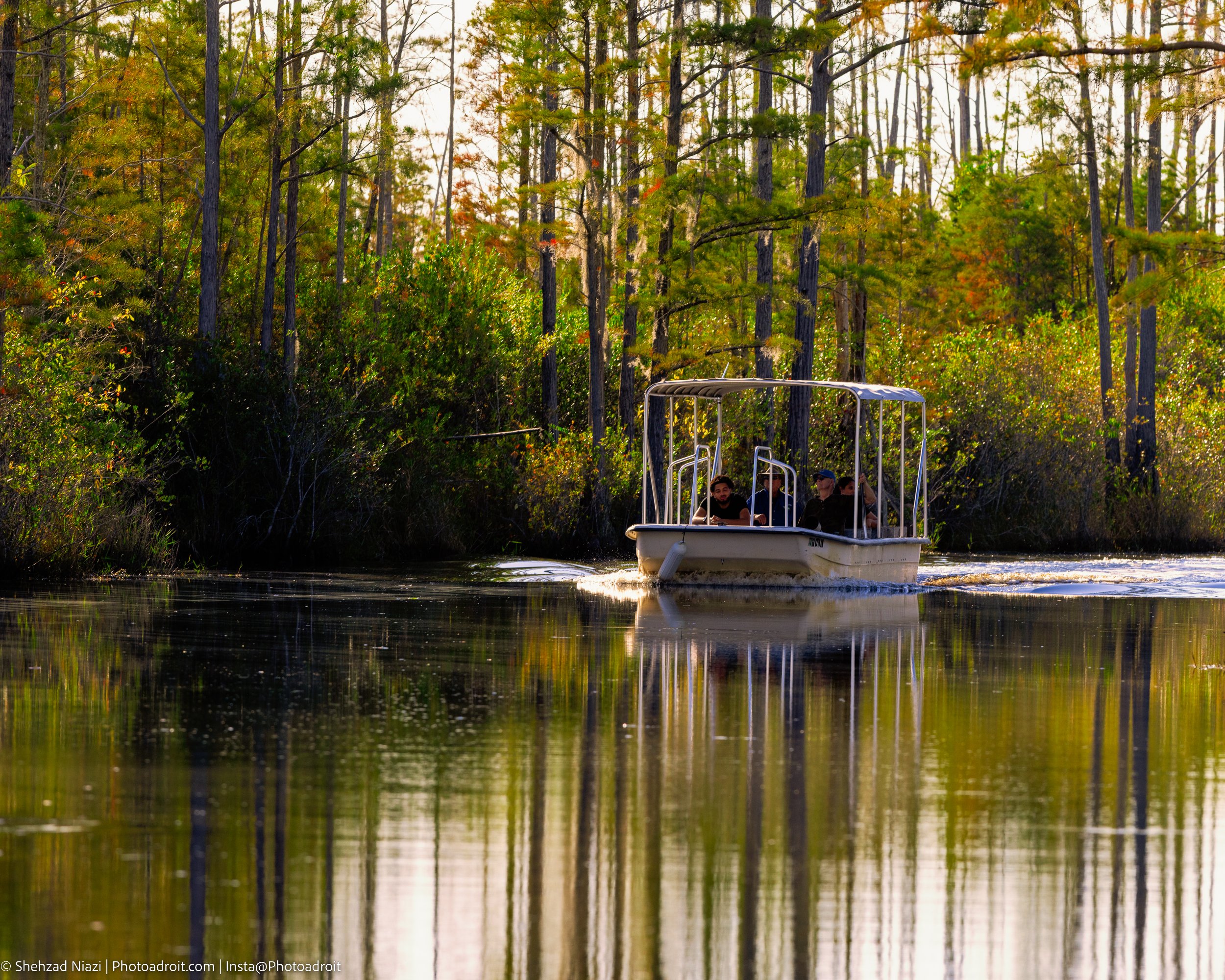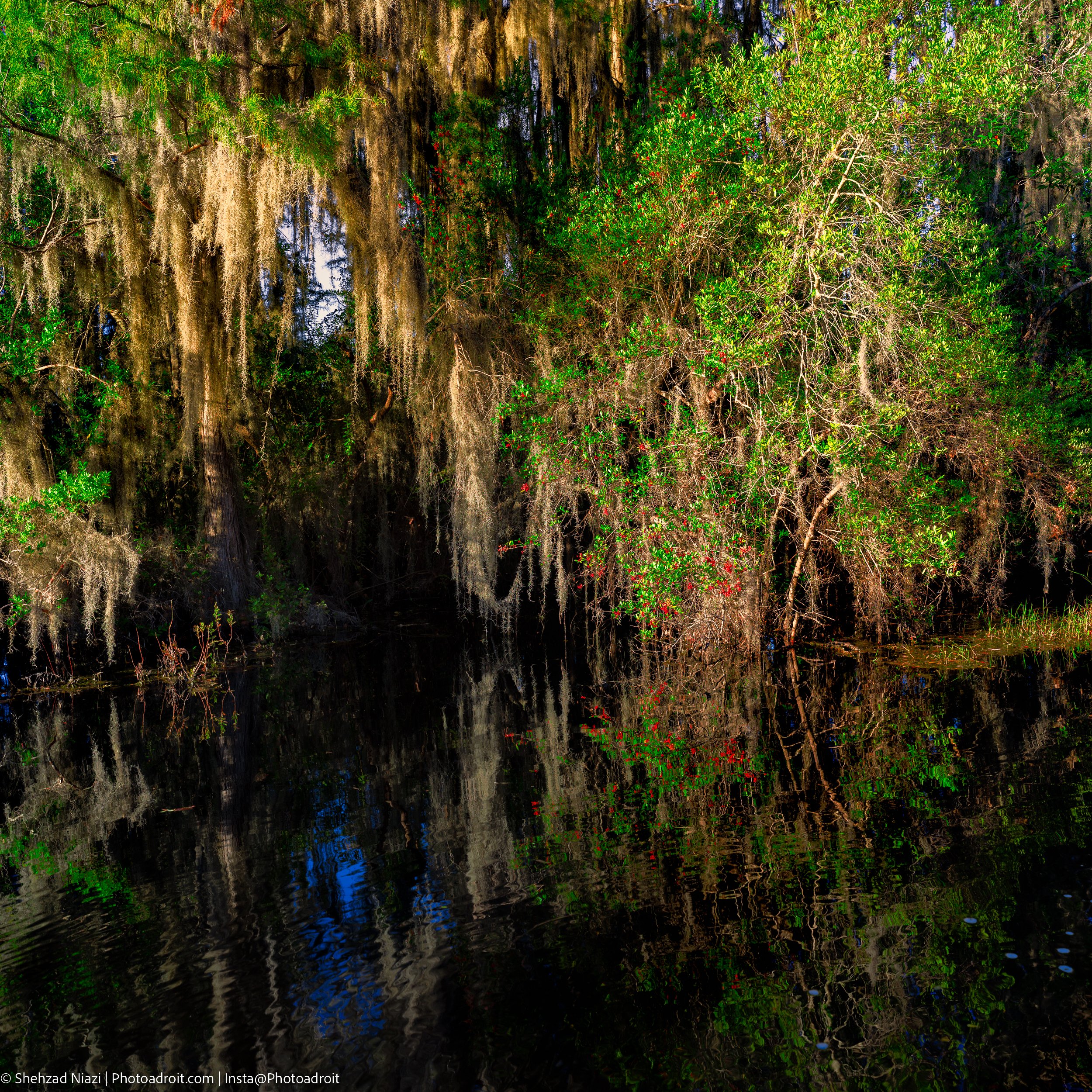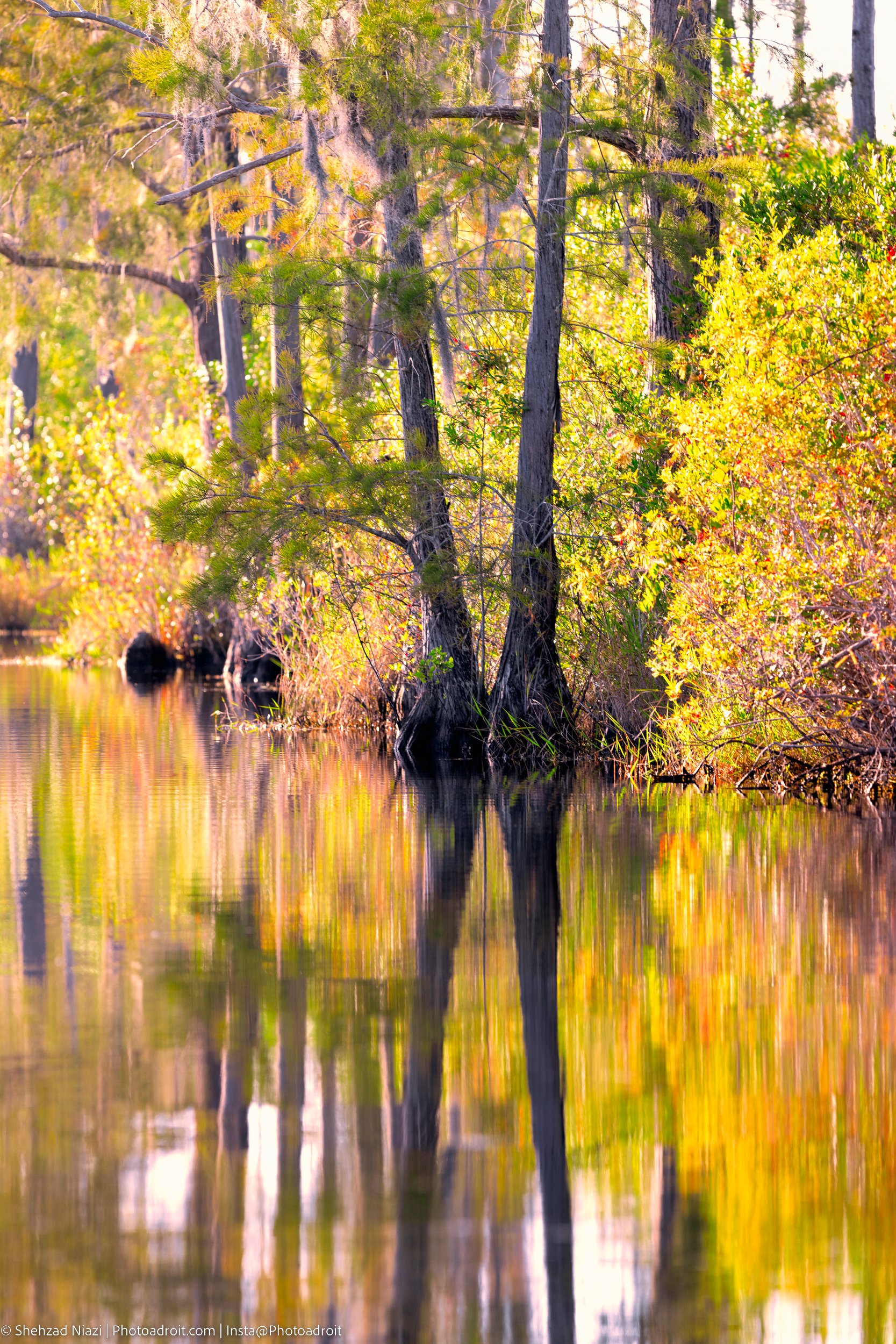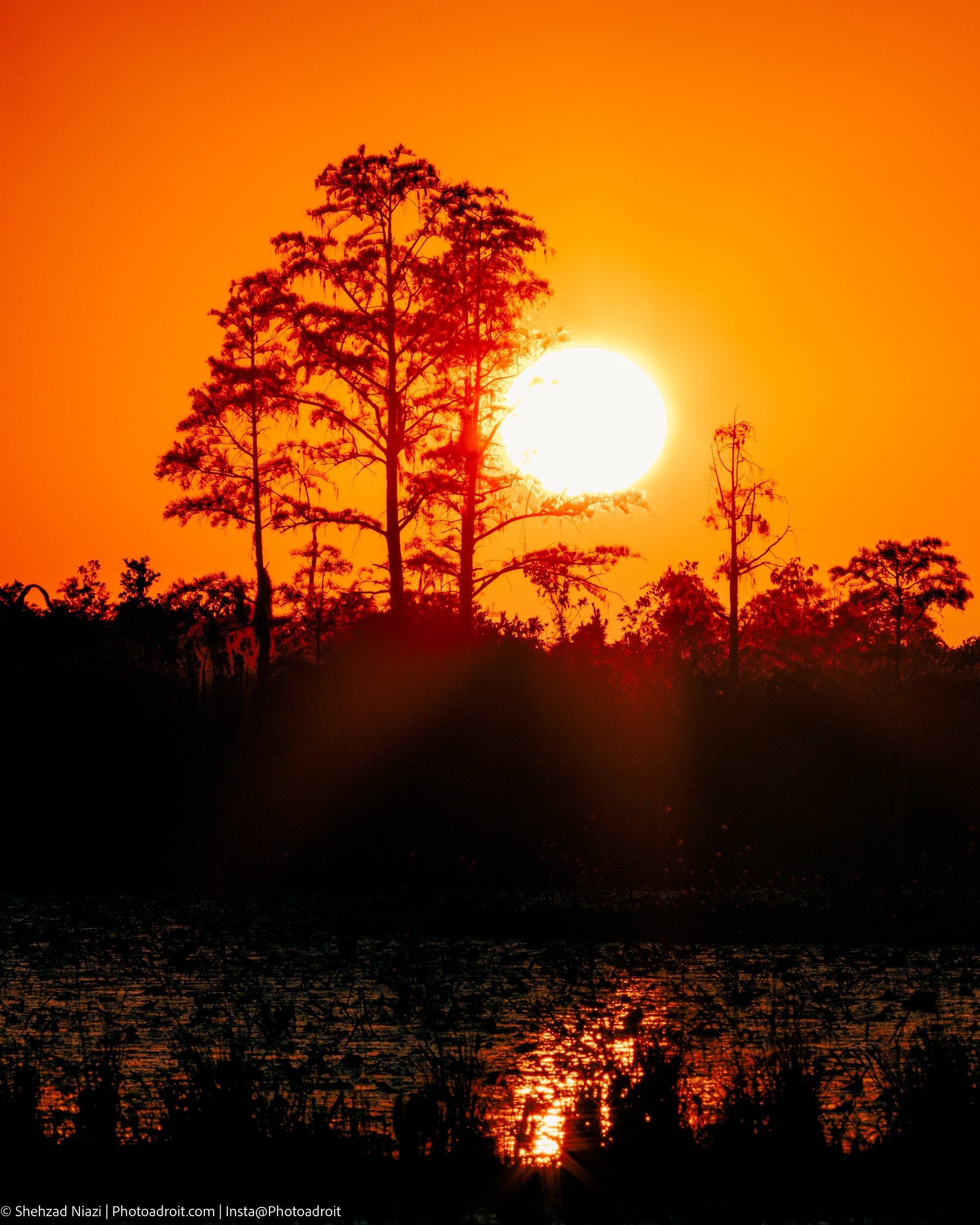Here is Okefenokee swamp, full of pathless, seamless, peerless mud.
Okefenokee National Wildlife Refuge is so unique that it is on the list to become a World Heritage Site. It contains 353,981 acres of National Wilderness Area within its expansive boundaries and is home to the headwaters of both Suwannee and St Mary’s rivers and the Okefenokee Swamp. Thanks to the Jacksonville Camera Club, I visited this place. They arranged a guided boat tour with the Okefenokee Adventures company. The weather was excellent, the sun was bright, and the sky was cloudless. It was my first tour with the camera club, and I thoroughly enjoyed it. All attendees were very welcoming, friendly, and considerate of each other. We had a very knowledgeable and friendly tour guide who shared interesting stories and details about the area’s geology, ecology, and history.
Swamps are lakes and ponds that decay and, over time, become a repository of the decomposing bodies and leaves of numerous trees and shrubs. The more the shrubs and trees die, the less and less the water level in the swamp. Lightness fades, and darkness ensues. Eventually, a shimmering lake or a pond overpowered by death and rot turns into a swamp. In the oxygen-deprived environs of the black waters of a swamp, the fallen vegetation decays very slowly and turns into peat. The decomposition must continue for fifty-three years to produce one inch of peat. Over the last 6500 years, peat formation in the Okefenokee swamp has deposited up to fifteen feet of peat in some areas. This peat stores 95 million tons of carbon and is the largest undisturbed deposit in the North American Coastal Plain. Peatlands are increasingly rare worldwide due to environmental changes and human activities. Most peatlands are found in colder climates and is very rare in temperate/subtropical climate. It is thus unique that peatland is preserved in Okefenokee thanks to the area’s protected status.
Just as the categories of people buried determine the class of cemeteries, the types of trees that grow in swamps determine their class – conifer, hardwood, shrub, and cypress. The Okefenokee swamp is a cypress swamp that straddles the boundary of north Florida and southeastern Georgia.
To fully explore this area, one must travel forty miles south to north or twenty-five miles east to west. This swamp is one of the largest in the United States and the most critical body of water in the Suwanee basin. Dozens of channels converge near Fargo, Georgia, and make the collecting system of the Suwannee River. This river drains 800 of 1000 miles2 of the swamp. To read more click here.
The Suwannee Canal Company tried to emulate what this river does naturally. The company used a large contingent of convicted men and embarked on a misadventure to drain the swamp into the St Mary’s River. Their goal was to log the cypress trees in the drained area. They were convinced it would all work and paid $6,310,180 to acquire the 238,120 acres (963.6 km2) of land. Little did they know that the Trail Ridge – hundreds of feet tall – would thwart the company’s best-laid plans. No matter how much the company borrowed to finance the dig or how hard the harsh supervisors forced the convict labor to toil, the ridge held its ground. The ridge still stands, but the Suwannee Canal Company slowly decayed and entered receivership on June 1897. Like the swamp it attempted to drain, it matched the swamp’s origin story: it died and sunk. Just as the decaying matter resulted in a diverse ecosystem, the attempts to drain the swamp produced the current-day Suwannee Canal, which allows 600,000 people from forty-six countries who visit the Okefenokee Swamp each year.
Here is the endless wet thick
cosmos, the center
of everything—the nugget
of dense sap, branching
vines, the dark burred
faintly belching bogs.
Mary Oliver. Crossing the swamp
There were plenty of reflections and patterns.
And a few flowers.
And our guide’s favorite cypress tree.
Sunset was tricky to photograph as we did not use tripods on the boat. The golden light of sunset turned trees and shrubbery full of intricate details into graphic silhouettes.
However, turning your back to the sun, you would be treated with a potpourri of color and appealing chiaroscuro.
A poor
dry stick given
one more chance by the whims
of swamp water—a bough
that still, after all these years,
could take root,
sprout, branch out, bud—
make of its life a breathing
palace of leaves.
Mary Oliver. Crossing the swamp
There were quite a few options that I could include in the foreground.
A breathing palace of leaves.
Equipment Notes:
Hasselblad CFVII 50c, 907X | XCD 30/3.5 | XCD 80/1.9
Canon EOS R5 | EF 300 IS 2.8ii



























